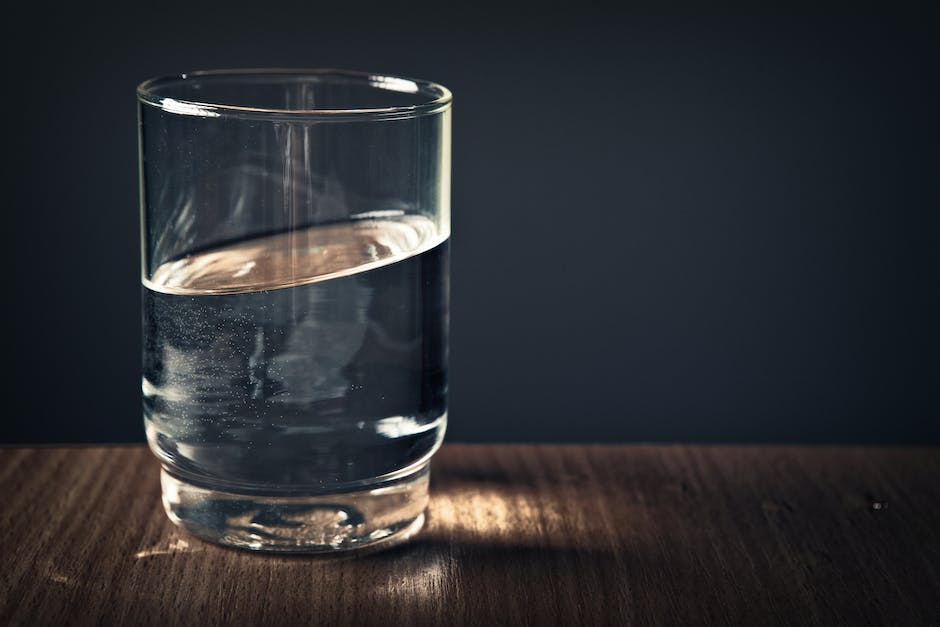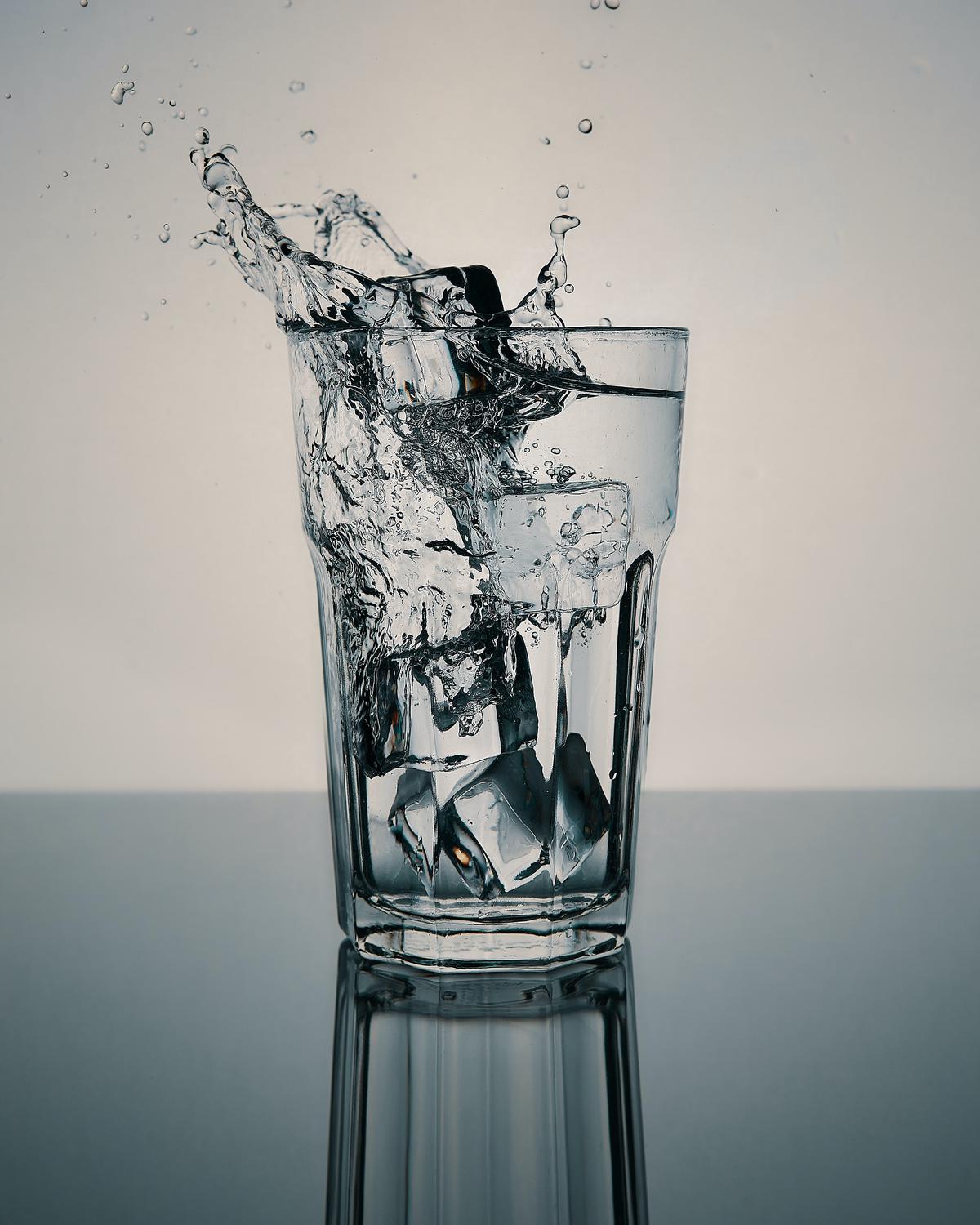Hydration, the process of absorbing, retaining, and balancing bodily fluids, stands as a pillar of human health. Water, as a fundamental life force, holds a multifaceted role in the human body, engaging in everything from metabolism activities and temperature regulation to waste elimination. However, the science behind recommended water intake isn’t as straightforward as often portrayed. Factors unique to every individual, including their level of physical activity, residing climate, health conditions, and even age or gender can influence their required water consumption. Within this complex interplay, this discussion explores the truth behind the commonly touted 8×8 rule, broadening the conversation to explore how diet contributes to one’s hydration status and shedding light on the potential directions future hydration research may embark upon.
Understanding Hydration and Its Importance
Understanding Hydration and Its Importance
Water is a fundamental necessity for life, and more than half of the human body is composed of water. This vital fluid is crucial in carrying out numerous bodily functions, including breathing, digestion, the circulation of nutrients and oxygen, waste elimination, temperature regulation, and the healthy functioning of cells and organs.
A state of optimal hydration maintains the balance between water intake and water loss. When your body lacks sufficient water, it enters into a state of dehydration. Dehydration can lead to several complications such as dry mouth, fatigue, extreme thirst, headaches, and reduced urine output. In more severe cases, dehydration can lead to fainting, extreme fatigue, and cognitive impairment.
On the other hand, overhydration, or the consumption of too much water, can also be harmful to health. Overhydration dilutes electrolytes in your body, particularly sodium, responsible for balancing fluids in and around your cells. This imbalance can result in a condition known as hyponatremia, causing symptoms such as nausea, headache, confusion, seizures, and in severe cases, can even be life-threatening.
Understanding Your Water Needs: The Science Behind It
Your personal water needs are influenced by several factors such as your age, sex, weight, the level of your physical activity, and your overall health. For instance, if you have more muscle mass, you’ll need more water because muscle tissues contain about 75% water. Also, activities like exercise, being in a hot environment, and conditions like pregnancy or breastfeeding can increase how much water your body needs.
The Institute of Medicine (IOM) recommends a daily intake of 3.7 liters (13 cups) for men and 2.7 liters (9 cups) for women. However, your water intake doesn’t have to come from drinking water alone – beverages and foods can also contribute to your total fluid intake.
A popular rule of thumb known as the “8×8 rule” suggests drinking eight 8-ounce glasses of water each day, totaling to about 2 liters or half a gallon. But remember, your individual water needs may differ, so don’t rely solely on your thirst to determine when to drink.
One practical way to check your hydration status is observing your urine color. Light-colored or clear urine is a good sign that your body is well-hydrated, while dark yellow urine may indicate dehydration.
While it’s clear that water is essential for life and good health, it’s also important to adjust your water intake based on your unique needs and lifestyle. Whether you’re an athlete, a busy professional, or someone trying to maintain good health, being aware of the science behind hydration can help you make healthier choices.

Factors Influencing Water Needs
Navigating Water Intake During Physical Activities
When you’re physically active, your need for water increases. This is because you lose more water through sweating during exercise. For instance, if you participate in high-intensity workouts, you may need to drink an additional 1.5 to 2.5 cups of water, depending on the length and intensity of your workout. If you’re exercising for over an hour, particularly in hot weather, sports drinks with electrolytes can be beneficial as they can help replace the water and sodium lost through sweat.
Climate’s Impact on Hydration Needs
Climate is another crucial factor that affects water intake. In hot or humid weather, people tend to sweat more, increasing their water loss. In cold climates, water loss may not be as obvious, but the body still loses substantial moisture through respiration and the skin’s increased dryness. High altitudes may also accelerate water loss. In such climates, individuals need to increase their water consumption to stay adequately hydrated.
Health Conditions and Hydration
Certain health conditions may affect water requirements. When you’re ill with fever, vomiting, or diarrhea, your body loses additional fluids, requiring you to increase water intake. Other conditions such as bladder infections and urinary tract stones also need a higher intake. Pregnant or breastfeeding women need additional fluids to stay hydrated, about 10 cups (2.4 liters) for pregnant women and about 13 cups (3.1 liters) for breastfeeding women daily.
Gender, Age, and Water Needs
The National Academies of Sciences, Engineering, and Medicine set general water intake recommendations at about 3.7 liters (or about 13 cups) for men and 2.7 liters (about 9 cups) for women. This difference is attributed to the average size difference between the two genders, as larger individuals generally need more water.
Age also impacts water needs. As people age, their body’s water content decreases, reducing their ability to conserve water. Older adults also may not feel thirsty despite being dehydrated. For this reason, older adults need to drink water regularly, even if they do not feel thirsty.
Unique Hydration Needs: A Global Viewpoint
While there are general guidelines available, it’s crucial to understand that each person’s water needs could be significantly different. Numerous factors like metabolism, dietary habits, and overall health status can manipulate an individual’s water requirements. Thus, even though following the mainstream water consumption guidelines may help stave off dehydration, it’s equally important to heed your body’s signals such as thirst or fatigue in order to determine if you’re sufficiently hydrated.

Examining the 8×8 Rule
Demystifying the 8×8 Hydration Rule
The widespread 8×8 rule simplistically advises drinking eight 8-ounce glasses of water daily, approximately equating to 2 liters or half a gallon. This rule has been popularized over the years due to its ease of recall and use. Nonetheless, a small misunderstanding of a 1945 suggestion by the Food and Nutrition Board of the National Research Council is often pinpointed as the origin of this rule, casting a slight shadow of doubt over its credibility.
Scrutinizing the 8×8 Rule
No one knows exactly where the 8×8 rule came from, and it seems to have solidified in pop culture and public health recommendations due to its simplicity and easy-to-remember nature. Its origins, however, are scientifically unsubstantiated. Interestingly, the National Research Council did advise that a suitable allowance of water for adults is 2.5 liters daily in most instances, but they also clarified that most of this quantity is contained in prepared foods.
Scientific Basis
When we examine the science behind water intake, it appears to be a complex affair influenced by numerous factors such as age, sex, weight, activity level, and overall health. For example, The National Academy of Sciences, Engineering, and Medicine suggests that an adequate daily fluid intake is about 3.7 liters (or 13 cups) for men and 2.7 liters (or 9 cups) for women. This isn’t just water but includes all beverages and food.
Contrasting Recommendations
There are several different recommendations when it comes to water intake, all largely depending on intended outcomes, individual parameters like age, sex, and physical activity levels, and environmental conditions. For example, The American College of Sports Medicine advises consuming 16-20 ounces of water or sports beverage at least four hours before an intense workout, while the Institute of Medicine suggests a total daily water intake of 3.7 liters (or about 13 cups) for men and about 2.7 liters (or about 9 cups) for women. These guidelines are more personalized, considering factors such as sweat rate, exercise intensity, and body mass.
Dehydration and Overhydration
Both dehydration and overhydration can lead to serious health problems. Dehydration occurs when you use or lose more fluid than you take in, and your body doesn’t have enough water and other fluids to carry out normal functions. It can result in extreme thirst, less frequent urination, dark-colored urine, fatigue, dizziness, and confusion. Overhydration, on the other hand, happens when you drink so much fluid that your kidneys can’t excrete the excess water. The overall effect is water intoxication, leading to hyponatremia, where low sodium levels in your blood can lead to life-threatening complications like seizures, coma, or even death.
Understanding Individual Water Intake Needs
Water plays a critical role in our bodies, contributing to temperature regulation, joint lubrication, and nutrient transportation to maintain optimal health. However, it’s important to recognize that water requirements vary from person to person. Factors such as dietary habits, geographical climate, and levels of physical activity can influence how much water each individual needs.
An effective approach to maintaining hydration is to pay attention to our body’s signals and consume water when feeling thirsty. While the familiar recommendation of 8 glasses of water a day can serve as a helpful baseline, it doesn’t take into account these individual factors. For more precise guidance, seeking advice from a healthcare provider can result in a more personalized understanding of your daily water intake.

The Role of Diet in Hydration
The Role of Water Intake in Bodily Functions
Composing around 60% of the human body, water plays an essential part in facilitating key physiological functions. These include digestion, nutrient transportation, body temperature regulation, and elimination of waste. General guidelines advise that men should aim to consume approximately 3.7 liters (equivalent to 13 cups) of water per day, and women should aim for a daily intake of 2.7 liters (about 9 cups). Remember, these amounts could vary based on individual factors discussed above.
Food as a Source of Hydration
While water is commonly recognized as the principal source of hydration, not all hydration necessarily has to come from the water we drink. Consumed foods, particularly fruits and vegetables, can contribute a significant amount towards our daily fluid intake. It’s estimated that about 20% of daily water intake typically comes from solid foods, especially water-rich foods like cucumbers, watermelons, and strawberries.
Fruits and Vegetables as Fluid Sources
Fruits and vegetables are particularly successful at hydrating the body due to their high water content. For instance, watermelon and strawberries contain about 92% water per volume. In addition to their water content, these fruits also provide essential vitamins and minerals that support overall health, including hydration. Similarly, vegetables such as cucumbers and lettuce have a water content of over 95%. These, along with other high-water content vegetables such as zucchini, radishes, and celery, can significantly contribute to overall hydration levels.
Other Beverages and Hydration
Beyond water and water-rich foods, other beverages can also assist in maintaining proper hydration levels. Milk, for instance, not only serves as a hydration agent but also provides vital proteins, B vitamins, calcium, and other essential nutrients. It can offer more significant hydration than plain water due to its nutrient content. Similarly, other drinks, like herbal tea and coffee, can contribute to the body’s hydration status. While once thought only to dehydrate, newer research shows that moderate coffee intake can add to daily fluid levels.
Effect of Diet on Hydration Levels
The diet significantly impacts hydration levels. A diet high in water-rich fruits, vegetables, and other water-based foods such as soups and broths can improve hydration. On the other hand, a diet high in sodium can reduce hydration status, as salt increases the body’s need for fluid to maintain proper fluid-electrolyte balance. Consuming alcohol and caffeine in excess can also act as diuretics, stimulating fluid loss and potentially leading to dehydration if not counterbalanced with water intake.
The Vital Role of Hydration in Health
Maintaining consistent hydration should never be overlooked as it is instrumental for our well-being. It’s important to consider that hydration isn’t just about the amount of water we drink but also the liquid we take in through our food. While there are plenty of guidelines suggesting how much water we should consume, they should be taken as a rough guide. Ultimately, each person’s needs will differ, influenced by factors including age, physique, level of physical activity, and overall health condition. Being attentive to hydration helps prevent dehydration and ensures the efficient functioning of our entire bodily system.

Photo by ummaliten on Unsplash
Future Research and Conclusions
Unresolved Questions Around Optimal Water Intake
Despite numerous research studies highlighting the importance of hydration for vital body functions like blood circulation, digestion, and body temperature regulation, our understanding of the ideal water intake still has significant gaps. A major challenge is the absence of universally agreed recommendations on daily water consumption. Many health organizations suggest diverse fluid intake guidelines. Some offer a specified quantity or range, typically around 8 cups or 2 liters, whereas others merely suggest drinking according to thirst. Since there’s no definitive consensus, this leads to possible misunderstanding and misinterpretation about the correct level of water consumption.
Implications for Future Research
Future research has vast potential to deepen our understanding of hydration needs, particularly in terms of personalized water intake. With advancements in nutritional science and technology, there could be a possibility of determining individual-based hydration guidelines. Such recommendations could consider factors like a person’s age, sex, weight, activity level, and overall health. Additional research could also examine specific populations, such as those with chronic illnesses, the elderly, and athletes, whose hydration needs may deviate from the general population’s.
Moreover, future studies can explore the potential long-term impacts of insufficient or excessive water intake, aspects that are currently not well-understood. This could result in more comprehensive and nuanced guidelines about safe recommended water intake, especially for those at risk of conditions like hyponatremia (low blood sodium, often due to excessive water intake) or chronic dehydration.
The Science Behind Water Intake
Despite these research gaps, the underlying science provides a firm basis for understanding why water intake is crucial. Water is fundamental to maintaining homeostasis, a stable, balanced internal state in the body. It transports nutrients and oxygen to cells, lubricates joints, regulates body temperature, aids digestion, and supports a myriad of other functions.
The human body is composed of about 60% water, but this percentage is continuously fluctuating as our bodies lose water through perspiration, breathing, urine, and bowel movements. To maintain equilibrium, we need to regularly replenish our water supplies. Each person’s exact water needs vary, however, based on a variety of factors including age, sex, weight, activity level, overall health, and more.
Finally, it’s important to stress that while water often comes to mind when we consider hydration, it isn’t the sole source. Various foods and other beverages, such as fruits, vegetables, soups, milk, and even tea or coffee, can contribute significantly to your daily fluid intake.
In sum, adequate hydration is a critical part of maintaining good health, but the specifics of optimal water intake are complex and dependent on many individual factors. The gaps in current research provide ample opportunity for future exploration and enhanced understanding of this important topic.

Photo by michaeloeser on Unsplash
Demystifying and understanding hydration isn’t only about determining the validity of the 8×8 rule or tallying ounces of water consumed. It’s about acknowledging the unique factors that influence each individual’s hydration needs and the various sources beyond water that can contribute to hydration. Amid the myriad of insights uncovered, the emphasis remains on maintaining hydration balance as key to overall health. Future research will continue to explore these facets, making hydration a process of continued learning and understanding. Rather than seeking a one-size-fits-all answer, we should embrace a more personalized and nuanced approach to meet our hydration needs, underpinning our ongoing journey to optimal health.
